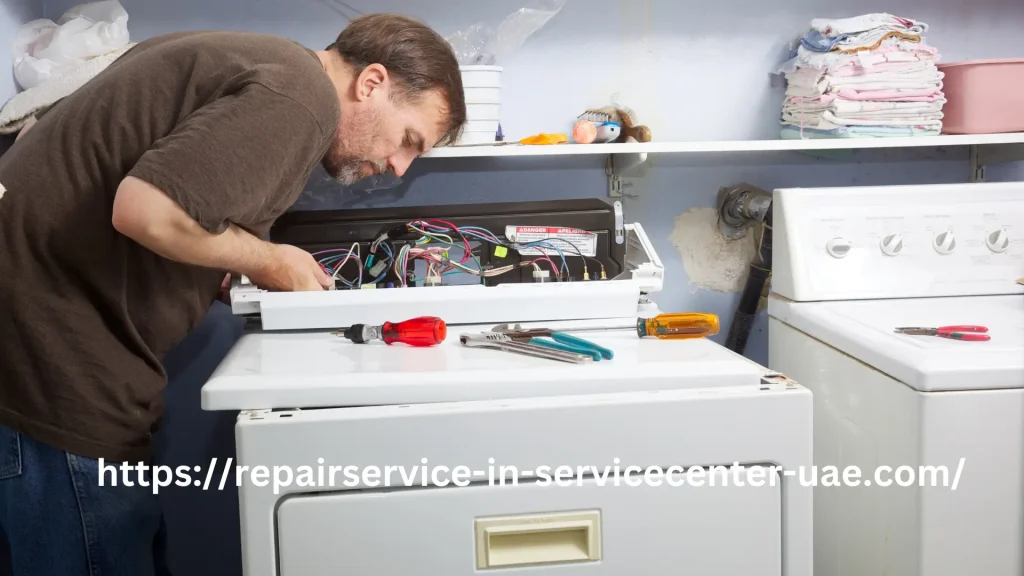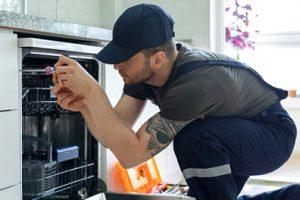A dryer that won’t spin can be a frustrating problem, especially when you have a pile of wet clothes waiting to be dried. Fortunately, many issues causing a dryer not to spin can be fixed with a bit of troubleshooting and some basic tools. In this blog post, we’ll walk you through the steps to diagnose and fix a dryer that won’t spin. Whether you’re a seasoned DIYer or a novice, you’ll find this guide helpful and easy to follow. If at any point you feel unsure or the problem persists, don’t hesitate to call a professional at 0567750003.
Understanding the Basics: Why Your Dryer that Won’t Spin
Before diving into the specifics of how to fix a dryer that won’t spin, it’s essential to understand the basics of how a dryer works and what might be causing the issue. A dryer operates by tumbling clothes through heated air, which evaporates moisture and leaves your clothes dry and warm. When the drum of the dryer stops spinning, it disrupts this process.
Several common issues can cause a dryer to stop spinning:
- Belt Issues: The belt is what connects the motor to the drum, allowing it to spin. If the belt is broken or loose, the drum won’t turn.
- Motor Problems: The motor drives the belt, which spins the drum. If the motor is faulty, the drum won’t spin.
- Idler Pulley Malfunction: The idler pulley keeps tension on the belt, ensuring it turns the drum. If it’s defective, the belt can slip off.
- Drum Rollers and Axles: These support the drum and allow it to rotate smoothly. If they are worn out, the drum might not spin properly.
Understanding these components will help you pinpoint the problem and find the appropriate solution. Let’s move on to diagnosing the specific issue with your dryer.
Step-by-Step Diagnosis: Identifying the Problem

Diagnosing why your dryer won’t spin involves a systematic approach. Here’s a step-by-step guide to help you identify the problem:
- Unplug the Dryer: Safety first! Always unplug the dryer from the electrical outlet before starting any repairs.
- Inspect the Belt: Open the dryer cabinet and check the belt for signs of wear or damage. A broken or loose belt is a common cause of a non-spinning drum.
- Check the Motor: With the belt removed, try to manually spin the motor shaft. If it doesn’t turn smoothly or makes unusual noises, the motor might be faulty.
- Examine the Idler Pulley: Look for any signs of wear or damage on the idler pulley. Ensure it spins freely and maintains tension on the belt.
- Inspect Drum Rollers and Axles: Remove the drum and check the rollers and axles. If they are worn out or damaged, they can prevent the drum from spinning.
By carefully inspecting these components, you can usually identify the root cause of the problem. Now, let’s move on to fixing the identified issues.
Fixing a Broken or Loose Belt
If your diagnosis points to a broken or loose belt, follow these steps to fix it:
- Purchase a Replacement Belt: Ensure you get the correct belt for your dryer model. You can find this information in the dryer’s manual or on the manufacturer’s website.
- Access the Belt: Remove the dryer’s front or rear panel (depending on your model) to access the drum and belt.
- Remove the Old Belt: Carefully take off the old belt from the motor and drum.
- Install the New Belt: Place the new belt around the drum, ensuring it aligns with the motor pulley and idler pulley.
- Reassemble the Dryer: Once the belt is in place, reassemble the dryer panels.
Testing the dryer after replacing the belt should confirm whether this was the issue. If the drum spins properly, you’ve successfully fixed the problem. If not, continue to the next potential issue.
Addressing Motor Problems
If the motor is the culprit, here’s how you can address it:
- Confirm the Motor Issue: Ensure the motor is indeed the problem by checking for continuity with a multimeter. If there’s no continuity, the motor needs replacing.
- Purchase a Replacement Motor: Buy a motor that is compatible with your dryer model.
- Access the Motor: Depending on your dryer model, you may need to remove the drum to access the motor.
- Remove the Old Motor: Disconnect the motor from the wiring harness and mounting brackets.
- Install the New Motor: Connect the new motor to the wiring harness and secure it with the mounting brackets.
- Reassemble the Dryer: Put the drum back in place and reassemble the dryer.
Testing the dryer after replacing the motor will help you confirm if the issue has been resolved. If the dryer still doesn’t spin, it might be due to the idler pulley or drum rollers and axles.
Fixing Idler Pulley Issues
The idler pulley is crucial for maintaining tension on the belt. If it’s faulty, here’s how to fix it:
- Access the Idler Pulley: Remove the dryer panels to access the idler pulley.
- Inspect the Pulley: Check for wear, cracks, or if it spins freely. A defective pulley often shows visible signs of damage.
- Purchase a Replacement Pulley: Get the correct replacement idler pulley for your dryer model.
- Remove the Old Pulley: Carefully remove the old pulley from its bracket.
- Install the New Pulley: Place the new pulley in position and ensure it maintains proper tension on the belt.
- Reassemble the Dryer: Put the panels back and secure them.
After replacing the idler pulley, test the dryer to see if the drum spins. If the issue persists, the problem might lie with the drum rollers and axles.
Replacing Worn-Out Drum Rollers and Axles
Worn-out drum rollers and axles can hinder the drum’s ability to spin. Here’s how to replace them:
- Access the Drum Rollers and Axles: Remove the dryer panels and drum to access the rollers and axles.
- Inspect the Rollers and Axles: Look for signs of wear or damage. Rollers should spin freely without wobbling.
- Purchase Replacement Rollers and Axles: Ensure you get the correct parts for your dryer model.
- Remove the Old Rollers and Axles: Carefully take out the old rollers and axles.
- Install the New Rollers and Axles: Secure the new rollers and axles in place, ensuring they spin freely.
- Reassemble the Dryer: Put the drum and panels back and secure them.
Testing the dryer after replacing the rollers and axles should confirm if this was the issue. If the drum spins smoothly, you’ve successfully fixed the problem.
When to Call a Professional

While many dryer issues can be fixed with DIY methods, some problems might require professional help. If you’ve followed all the steps and your dryer that won’t spin, it’s time to call a professional. They have the tools and expertise to diagnose and fix more complex problems. Additionally, if you’re uncomfortable with any part of the repair process, it’s safer to call a professional at 0567750003.
Preventive Maintenance Tips
Regular maintenance can help prevent your Dryer that Won’t Spin in the future. Here are some tips:
- Clean the Lint Filter: After every use, clean the lint filter to prevent lint buildup, which can cause overheating and reduce efficiency.
- Check the Venting System: Ensure the venting system is clear of obstructions. A clogged vent can cause the dryer to overheat and stop spinning.
- Inspect the Belt Regularly: Periodically check the belt for signs of wear and replace it before it breaks.
- Lubricate the Drum Rollers and Axles: Apply a few drops of oil to keep the rollers and axles spinning smoothly.
By following these preventive maintenance tips, you can extend the life of your dryer and avoid future issues.
Conclusion
Fixing a dryer that won’t spin involves understanding the basics, diagnosing the problem, and addressing the specific issue, whether it’s a broken belt, faulty motor, defective idler pulley, or worn-out drum rollers and axles. By following the steps outlined in this guide, you can save time and money by fixing the problem yourself. However, if the issue persists or you’re unsure about any part of the process, don’t hesitate to call a professional at 0567750003. Regular maintenance can also help prevent future problems, ensuring your dryer runs smoothly for years to come.







